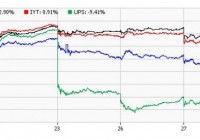Update: Brookfield Renewable Energy Partners To Acquire 488 MW Renewable Portfolio In Brazil
Brookfield Renewable Energy Partners entered into an agreement to acquire a 488 MW multi-technology renewable portfolio in Brazil from Energisa S.A. Confirms our opinion that BEP will continue to grow through M&A. Anticipated in original investment rationale. Brookfield Renewable Energy Partners (NYSE: BEP ) recently announced a $935 million acquisition of a 488 MW portfolio of renewable assets located in Brazil. The equity component is valued at $545 million with the remainder in assumed long-term non-recourse debt. The transaction is funded with institutional partners and expects to retain a 40% economic interest in the project. If the transaction meets regulatory approvals, it is projected to close in Q1 of 2015. As we noted in our previous write-up on Brookfield Renewable, the company is looking for growth through project developments and acquisitions. At the time, BEP was focused on completing its Safe Harbor acquisition, which is a 417 MW hydroelectric facility in Pennsylvania. With the Safe Harbor and Bord Gais Wind Energy transactions both closed, management has been able to refocus its attention on purchasing even more attractive assets with contract durations over 10 years. We view the current transaction favorably, especially since Brookfield Renewable’s management considers Brazil to be a strong growth area. In fact, the firm has a long history of operations in Brazil and announced, in Q4 of 2014, that they had commenced construction of a 25 MW hydro facility in the country. Overall, we have a positive outlook on units of BEP, which are currently yielding 4.9%, and feel that management is living up to its goal of increasing distributions by 5-9% per year. Now that you’ve read this, are you Bullish or Bearish on ? Bullish Bearish Sentiment on ( ) Thanks for sharing your thoughts. Why are you ? Submit & View Results Skip to results » Share this article with a colleague
